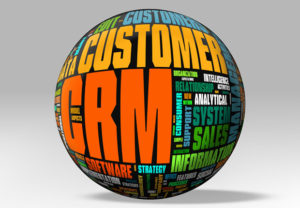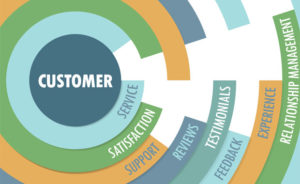A company in the CPQ (configure, price, quote) space last year announced an artificial intelligence feature for its solution. AI is a trend, and it’s always nice to be trendy, but as great as CPQ is, it’s still only one source of data.
Without sufficient data, AI is extremely limited. It’s like allowing your toddler to learn only about colors: The kid might be a whiz with colors, all right, but without context — in other words, more data — that information won’t make any sense.
This is the scary, behind-the-curtain aspect of AI: We’re still in a world where the systems depend on us humans to ensure they’re getting the data they need to deliver good results.
AI can’t tell humans, “You need to give me this information, too!” They can’t say, “I could be more effective if you’d just allow me to compare what I come up with against commissions data for a historical reality check.”
People need to come to these realizations to make them happen — and unfortunately, when it comes to these kinds of things, our species is always the weak link.
There were numerous sessions about AI at last month’s CRM Evolution conference. Some things are still very much up for debate — even the very definition of “artificial intelligence” was the subject of some heated discussion. The promise is clearly there. However, the one variable that’s impossible to predict is the human element, especially in relation to technology.
AI for sales often is positioned as a panacea — something that will deliver results instantly and make life better for all involved. There are no panaceas, though. There’s nothing that works instantly. AI will change the game for sales — eventually — but that depends on three things happening.
The Right Data
First, the company’s staff will need to sit down and understand what they need to do to ensure their AI solutions learn the right things. That means analyzing the data they generate and understanding its value in the sales decision-making process.
Integrating disparate data sets is the first step; making decisions about different data’s weight in the decision-making process is next. Those hoping for a quick solution are deceiving themselves: Businesses have to understand themselves and their own data before they can expect a machine to understand those things.
Sales data may include the demographics of the customers and prospects from CRM, commissions data on sales behaviors, data about the usage of content in sales enablement systems, contract information, input from customer support, data about feedback and customer experience monitoring tools, and much more — and it’s likely to vary from business to business.
The Right Format
Next, businesses have to ensure that the data they have determined to be critical to the success of an AI solution is in a format that can get into the AI system automatically and with as little ongoing human intervention as possible.
Deciding at this stage that some data sets are just too hard to get into AI is an admission that you don’t plan to put in enough work to make it effective. If that is the case, stop work on any project as early as possible, because otherwise you’ll simply be investing in a system that allows you to make incorrect or incomplete decisions faster. You probably can make those incorrect decisions manually at a far lower cost.
The Right Commitment
Third, the team overseeing this early work needs to keep at it even after the system is in place. Just like lead scoring, or self-service customer support, or any of a number of things that are supposed to automate processes, adjustments will be needed over time to avoid the system sliding into obsolescence.
This isn’t just about the team staying alert about its task; leadership has to ensure that this gets priority, and that the team is allowed to continue its work instead of being moved to other tasks.
AI is never done learning, because customers, products and services, markets, and the data that businesses collect continually evolve and change.
Roll Up Your Sleeves
These things sound like a lot of work — and they are. The good news is that since sales AI platforms are still in their early stages, these three concepts can be acted upon now.
When the right AI technology hits the market, your business can be prepared with an understanding of the data needed, the weighting for that data in the decision-making process, an integration strategy for that data and, most importantly, a mindset that acknowledges that the work on refining AI is never going to be complete.
Sales AI, when it’s implemented well, will save salespeople time, and allow them to be far more productive than they are today.
Companies planning an AI-enabled future need to invest the time, thought and money to make sure they have a foundation for an AI solution that works — both when the system is first turned on and over time.


























































